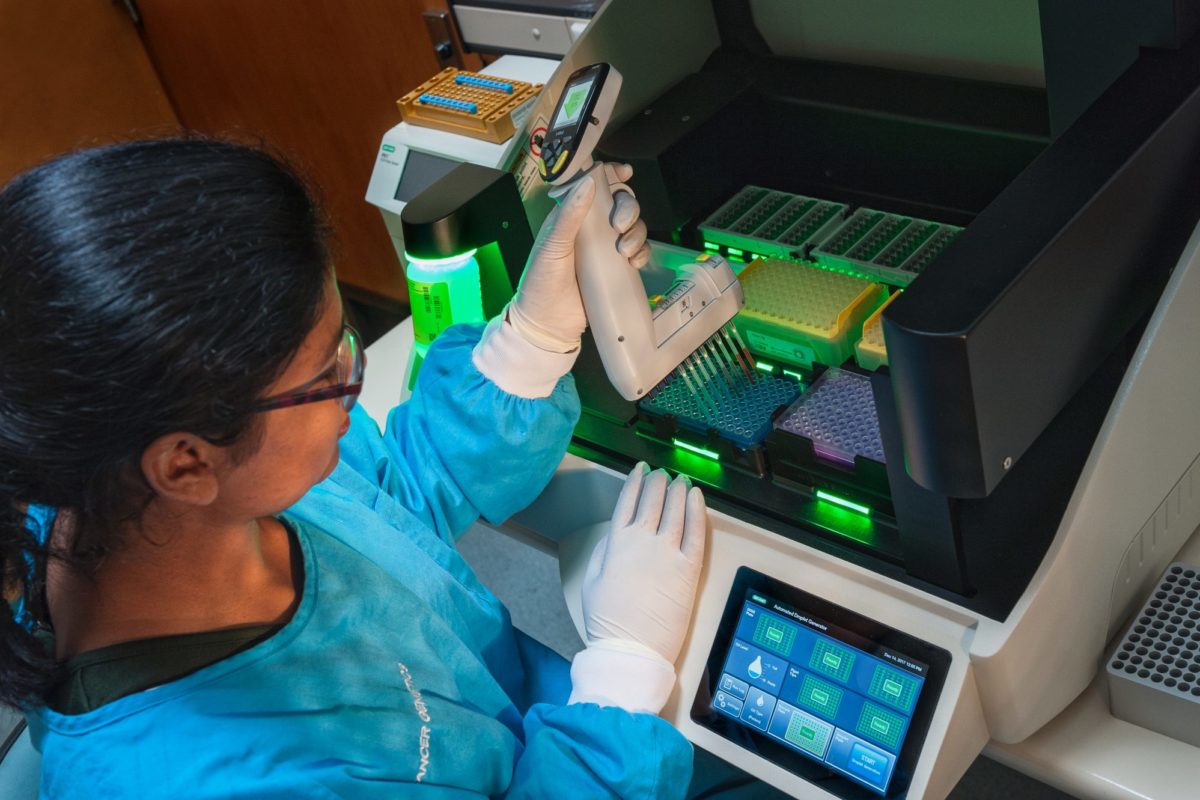TĀ MĀTOU E TŪHURA ANA
WHAT WE ARE INVESTIGATING
Take | Issue
Undergoing cancer treatment can be traumatic, difficult and time-consuming, and access to cancer treatment is inequitable, especially for rural populations. The current healthcare system relies on invasive imaging techniques (only available at major hospitals) to monitor the progress of cancer treatment.
Whāinga | Aim
Circulating tumour DNA (ctDNA) technology uses a simple blood test to identify and measure cancer markers in the bloodstream. It delivers more rapid and sensitive results than current methods for monitoring cancer treatment.
This study aimed to demonstrate the utility of ctDNA in the management of cancer in a variety of clinical settings, with the aim of establishing the technology as a routine service in New Zealand. It also investigated the potential for using ctDNA technology to improve access to care for patients in rural areas by developing a new community-based method for monitoring cancer treatment.
Huarahi I Whāia | Approach
An earlier Healthier Lives’ study established the utility of ctDNA technology in detecting colorectal cancer and melanoma.
This study tested the feasibility of using ctDNA as a cancer surveillance tool and investigated its potential for early cancer detection. It also investigated extending the use of ctDNA technology to managing other cancers.
NGA PUTANGA ME TE PĀNGA
OUTCOMES AND IMPACT
Outcome | Putanga
The research had multiple aspects, including bioinformatics, laboratory science, clinical studies, and engagement with patient groups, Māori communities, Pasifika researchers and clinicians.
The laboratory work established that ctDNA was able to provide an accurate measure of tumour burden and clearly show a patient’s response to treatment, while also revealing details about how tumours evolve in individual patients – providing new biological understanding that can be used to improve future patient care.
The clinical utility of ctDNA as a near-real time marker of treatment response was demonstrated and the research also showed that, with the addition of an appropriate transport buffer, blood samples were stable for 10 to 14 days, opening the opportunity for better care of rural populations.
Engagement to understand diverse views surrounding the technology led to an appreciation for the importance of data security, a preference amongst Māori for community-based services and the need for wider education around the benefits of early cancer detection.
Next Steps | Te ara kei mua
The next steps for this research are to:
- demonstrate the economic gains and cost-efficiencies made when specific ctDNA applications are integrated into clinical workflows;
- initiate community-driven projects to establish ctDNA-based cancer screening;
- develop ctDNA methodology to provide accurate data on a cancer’s anatomical location; and
- increase the sensitivity of ctDNA technology to allow even earlier detection of new or relapsing cancers.
Research Products | Nga hua o te rangahau
This project generated a research platform (molecular protocols, clinical networks and bioinformatic pipelines) now being used by early and mid-career researchers to investigate applications for ctDNA in: early diagnosis of colorectal, lung, endometrial and prostate cancers; markers for lung cancer drug response; minimal residual disease in head and neck cancer; and the correlation between ctDNA levels, immune markers and treatment response.

Video
Research presentation: Improving cancer diagnosis and treatment with ctDNA
Healthier Lives Kōrero Tahi 2024: equity and beyond (13-14 February 2024)
WHAKAWHITI MŌHIOTANGA
KNOWLEDGE EXCHANGE
Academic Publications | Puka Rangahau
- Dynamic ctDNA mutational complexity in melanoma patients receiving immunotherapy Mol Diagn Ther. 2023 Jul;27(4):537-550.
- Complex Patterns of Genomic Heterogeneity Identified in 42 Tumor Samples and ctDNA of a Pulmonary Atypical Carcinoid Patient Cancer research communications vol. 3,1 31-42. 10 Jan. 2023.
- Circulating tumor DNA is a sensitive marker for routine monitoring of treatment response in advanced colorectal cancer Carcinogenesis. 2020 Nov 13;41(11):1507-1517.
- Comparison of Roche Cell-Free DNA collection Tubes® to Streck Cell-Free DNA BCT®s for sample stability using healthy volunteers Practical Laboratory Medicine. Volume 16, August 2019, e00125.
Pāpāho | Media
- ‘Game-changing’ cancer detection test in development Otago Daily Times, June 2023
- PhD candidate Jordon Lima on reclaiming te reo Māori University of Otago, September 2022
- Battling bowel cancer - the frustration, the tears, the gratitude Stuff.co.nz, July 2021
- Personalising cancer He Kitenga-Research highlights, University of Otago September 2020
Video | kōnae whakaata
- Healthier Lives Kōrero Tahi 2024: equity and beyond (13-14 February 2024)

















